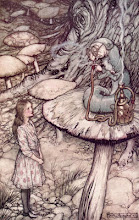Part I Notes on “Can Media and Theater Speak the Same Language?” by Arnold Aronson
-digital media and film can be used in theater to enhance entertainment value or to add to the scenic design and architecture of a piece
-1920s German director Edwin Piscator used projections and film (one of the first)
-Aronson states that media(for the most part) cannot be as effective onstage as other forms of scenery and illusion b/c it has different implications, meanings, and context than theater
-creates a dislocated feeling in audience(which might be appropriate if that is the intended effect)
-problems with combining media and stage: human physiology(vision), psychology(interpreting of vision), philosophy(beliefs about the significance of vision), modernity vs ancient tradition(art forms of different eras)
-fundamental, unique quality of theater: objects are represented by themselves(human represents another human) or a simulacrum--“a slight, unreal, or superficial likeness or semblance;an effigy, image, or representation”
-the spatial aspect of a theatrical setting implies time and a linear passage, as well as the actors' existence in real time
-media has different spatial qualities
-disorients audience, takes them out of the theater
-b/c of the perspective of a 2-D scene, it must be viewed from a particular vantage point to be effective/to make sense
-pictorial scenes look inward, whereas theater may look outward and make direct connections with the audience
-theater is always in real time/the present, 2-D art can be “mummified”
-media/film/live feed are not mummified, but still disjointed
-the frame of a theatrical space focuses audience attention on action within play and what can be imagined outside of it

No comments:
Post a Comment